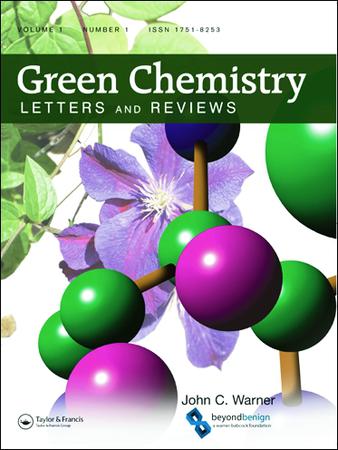Reactivity trends for mechanochemical reductive coupling of aryl iodides
IF 5.1
3区 化学
Q1 CHEMISTRY, MULTIDISCIPLINARY
引用次数: 0
Abstract
ABSTRACT Reductive coupling reactions are a facile and versatile way to make carbon – carbon bonds. However, most methods within this class of reactions makes use of reprotoxic, amide-based solvents. Mechanochemistry, a method that does not always require solvent, has been used for reductive coupling methods but still reports the use of at least some amide-based solvent for productive outcomes. This work presents the reactivity trends for the reductive homocoupling of aryl iodides when using various amounts of N,N-dimethylformamide (a commonly used amide-based solvent) and dimethyl carbonate (a greener alternative). The results of these experiments show that dimethyl carbonate may be used in sub-stoichiometric amounts with equal or greater efficiency to N,N-dimethyl formamide. Further, cross-electrophile coupling (XEC) is explored with various solvents, showing that N-butyl pyrrolidinone is efficient as a liquid assisted grinding solvent. These experiments show that under mechanochemical conditions, safer solvents are able to be used with no loss of efficacy for reductive coupling reactions. GRAPHICAL ABSTRACT芳基碘化物机械化学还原偶联的反应性趋势
本文章由计算机程序翻译,如有差异,请以英文原文为准。
求助全文
约1分钟内获得全文
求助全文
来源期刊

Green Chemistry Letters and Reviews
CHEMISTRY, MULTIDISCIPLINARY-GREEN & SUSTAINABLE SCIENCE & TECHNOLOGY
CiteScore
9.10
自引率
3.00%
发文量
48
期刊介绍:
Green Chemistry Letters and Reviews is an Open Access, peer-reviewed journal focused on rapid publication of innovative new syntheses and procedures that reduce or eliminate the use and generation of hazardous materials. Reviews of state-of-the-art green chemistry technologies are also included within the journal''s scope.
Green Chemistry Letters and Reviews is divided into three overlapping topic areas: research, education, and industrial implementation. The journal publishes both letters, which concisely communicate the most time-sensitive results, and reviews, which aid researchers in understanding the state of science on important green chemistry topics. Submissions are encouraged which apply the 12 principles of green chemistry to:
-Green Chemistry Education-
Synthetic Reaction Pathways-
Research and Process Analytical Techniques-
Separation and Purification Technologies-
Renewable Feedstocks-
Degradable Products
 求助内容:
求助内容: 应助结果提醒方式:
应助结果提醒方式:


